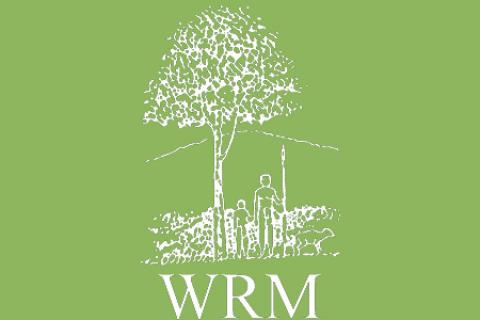Indonesia’s forests are once again on fire. Smoke from fires in Sumatra caused the worst haze conditions in Malaysia since 1997. An unhealthy smoky haze (a mixture of dust, ash, sulfur dioxide and carbon dioxide) has been covering Malaysia's main city Kuala Lumpur and 32 other towns. Schools were closed, and hospitals filled with patients complaining of respiratory ailments. Data from Indonesia’s Riau Health Service reported that more than 1990 people have been experiencing upper respiratory infection and eye problems.
Bulletin articles
In an attempt to build or recall a holistic vision of health as a balanced condition where the joy of living can emerge, it may be relevant to think over different sorts of living –very different from the allegedly advanced western modern life: hunter-gatherers, for example.
Hunter-gatherers consume less energy per capita per year than any other group of human beings. Yet when you come to examine it, the original affluent society was none other than the hunter's - in which all the people's material wants were easily satisfied.
“We are shown that our life exists with the tree life, that our well-being depends on the well-being of the Vegetable Life …” is what I read over and over again in the “Message to the Western World” sent by the Six Nations Iroquois Confederacy -from the northwest of the North American continent- to the United Nations in 1977.
Like many other Indigenous Peoples, the Katu in Laos depend on the forests for their livelihoods. Living in the heavily forested Annamite Mountains near the Vietnamese border, the Katu in Laos practise shifting cultivation and hunt and gather much of their food, fibres, medicines and building materials in the forest. Until recently, that is.
From 17 to 23 July in Cuenca, Ecuador, over 1,300 participants from 80 countries in the five continents met under the slogan of “The voices of the Earth are calling” to analyze global health problems and to draw up health promotion strategies for all. The final declaration at the end of the event identifies neo-liberal policies transferring wealth from the South to the North, from the poor to the rich and from the public sector to the private sector, as the main cause of the worsening of the health conditions of the majority of the world population.
The Commission for Africa was launched by the British Prime Minister Tony Blair in February 2004. The aim of the Commission “was to take a fresh look at Africa’s past and present and the international community’s role in its development path.” It was tasked with producing a report “with clear recommendations for the G8, EU and other wealthy countries as well as African countries.” This last “as well” is already giving a clue to the Commission’s mandate.
The story of the rapid destruction of Cameroon’s forests that has occurred since the 1980s, does not suffer from a lack of attention: many testimonies, analyses and recommendations have been written and many donor-led interventions to halt the deforestation have been simultaneously attempted. Between 1980 and 1995, it is estimated that close to 2 million hectares of forest were cut down in Cameroon.
As reported in past WRM bulletins, Liberia’s forests have long been exploited to fuel conflict in this small West African country. Liberia houses the last two blocks of the upper Guinea Forest, which is known to be home to over 2,000 flowering plants, some 240 of which are timber species, and 60 of which have been commercially harvested.
While accounts of illegal logging in southeast Asia’s and central Africa’s tropical forests, to supply the booming Chinese economy are increasingly common, this report is one of the first to document the “Chinese takeaway” from the semi-arid forests of Southern Africa. A four-months study of forestry in Zambezia province of Mozambique was conducted between November 2003 and October 2004.
A recent study carried out in the South African tree plantation sector analyses the impacts of outsourcing on forestry --mostly women-- workers. The report points out that outsourcing in the forestry industry is in line with global business trends and serves to increase flexible employment terms for the benefit of the industry. Outsourcing also saves on cost of capital equipment and fixed costs associated with full-time employees, and avoids having to deal with labour legislation brought in by the Government.
Burma's State Peace and Development Council is one of the most brutal military dictatorships in the world. The UN's International Labour Organisation describes forced labour in Burma as a "crime against humanity". Around one million people have been forced from their homes and land. The Burmese army, the Tatmadaw, uses rape as a weapon against indigenous women and children. It recruits child soldiers. On 6 July 2005, Burma's junta released more than 240 prisoners, many of them political prisoners, but about 1,400 political prisoners are still imprisoned. Torture of prisoners is routine.
Regarding women's indigenous knowledge, apart from a few ethnographic and anthropological studies, little consideration had been given by early androcentric-biased anthropologists, ecologists and environmentalists to the gender dimension of indigenous knowledge systems.
